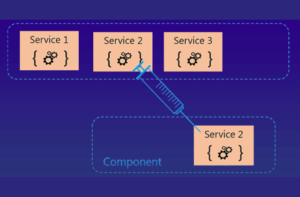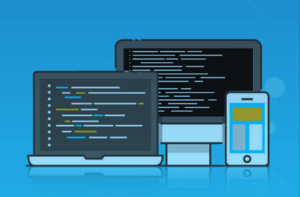Every groundbreaking product starts with a single idea—but transforming that idea into something tangible, functional, and market-ready is no small feat. This is where the power of a Minimum Viable Product (MVP) comes in.
Think of it as your blueprint for innovation: a streamlined, efficient way to bring your vision to life, gather real-world feedback, and refine your product for success. In this guide, we’ll take you through a step-by-step journey of turning your ideas into life through MVP development that not only works but sets the stage for long-term growth.
What Is MVP( Minimum Viable Product)?
A Minimum Viable Product is essentially the simplest version of a product that still delivers enough value to meet the needs of early users. Minimum Viable Products include only the core features necessary to solve a specific problem or fulfill a particular need.
Think of it as a prototype with just the essentials, aimed at answering three critical questions:
- Do people want it? – Is there a demand or interest in your product?
- Does it work? – Does it solve the problem it was designed for?
- Can it make money? – Will people pay for it or use it in a way that generates revenue?
Figure 1
What Is The Major Difference Between MVP And Full Product?
While a full product is comprehensive with numerous features, the MVP development process focuses on the essentials. Think of it as a proof of concept that allows you to validate your business idea without the burden of extensive development.
Simplicity is key in an MVP development.
By concentrating on only the essential features, you reduce development time and costs, enabling quicker market entry. This streamlined approach allows for faster testing, gathering key feedback early on, and refining the product to meet user needs. Focusing on core functionality ensures that your MVP addresses the primary problem effectively before investing in additional features.
Figure 2
Purpose of an MVP
An MVP serves multiple purposes:
- Understanding market needs through MVP: With MVP product development, you can observe how your target market interacts with your product. This interaction reveals insights about user preferences and behaviors.
- Validating business ideas and concepts: The process of testing an MVP allows entrepreneurs to determine whether there’s a genuine market demand for their product before committing to a full-scale launch.
- Resource optimization in early stages of minimum viable product app development: MVPs require fewer resources, making it easier for startups to allocate their budget wisely while still working towards comprehensive product development.
How We Develop MVP For Your Business? - Process Explained
Once we receive your requirements regarding MVP development services, we focus on the following key stages to develop the MVP for your business. Here’s our process:
Figure 3
I. The MVP Development Process Phases
A. Idea Generation
Getting ready for launch requires careful planning:
- Strategies for a soft launch vs. a hard launch: A soft launch allows for initial testing with a smaller audience, while a hard launch aims for maximum reach.
- Setting up necessary marketing and support channels: We prepare marketing materials and ensure a support system is in place to assist users.
- Assembling a launch team and defining roles: Having clear roles ensures everyone knows their responsibilities and can address issues that arise.
B. Market Research
- Methods for conducting effective market research: Surveys, interviews, and focus groups can provide vital information.
- Identifying target audience and analyzing competitors: We understand and define who your customers are and what similar products exist in the market.
- Collecting qualitative and quantitative data: Use a mix of numbers and personal stories to understand the market landscape comprehensively.
C. Defining Key Features
- Prioritizing features for the minimum viable product: List features according to their importance. Focus on those that directly solve the user’s problem.
- Creating user stories to understand user needs: This technique can help us visualize how the target audience will interact with your product.
- Balancing essential vs. non-essential features for MVP: This prevents feature creep and ensures the dilute MVP’s purpose.
II. Planning and Designing the MVP
A. Creating a Strategy
- Establishing goals and success metrics for the MVP: We define clear objectives, like user acquisition numbers or engagement levels.
- Designing a roadmap for development: A well-structured roadmap will guide our expert development team and keep everyone aligned.
- Risk assessment and management strategies: Identify potential pitfalls and devise plans to mitigate risks proactively.
B. User Experience (UX) and User Interface (UI) Design
- Importance of intuitive design in MVPs: We believe users should find it easy to navigate your product; otherwise, they might abandon it in frustration.
- Tools and methods for prototyping and wireframing: We utilize tools like Sketch, Figma, Adobe XD, and many others to build prototypes that visualize your ideas.
- Gathering user feedback on prototypes before development: Early user feedback helps refine MVP before resources are fully committed.
C. Development Methodologies
- Choosing between Agile, Lean, or Waterfall methodologies: There are several methodologies however for the best MVP app development services we prefer Agile and Agile 2.0 methodologies. Agile is often favored for its flexibility, allowing for quick iterations based on user feedback.
- Iterative development and its benefits for MVPs: This MVP development process encourages frequent testing and adaptation, which is essential for MVPs.
- Testing throughout the development cycle: Constant testing helps our expert team identify and fix issues before they escalate.
III. Launching the MVP
A. Preparing for Launch
- Finalizing product features for launch: Ensure all the essential features of your Minimum viable product are ready to go, addressing any last-minute changes from feedback.
- Building anticipation through pre-launch marketing: Prefer to engage with the audience before the official launch to create buzz and interest.
- Coordinating post-launch support and feedback channels: We establish clear communication channels to gather user feedback and resolve any issues promptly after the launch.
B. Collecting User Feedback
- Approaches to gathering user feedback post-launch: We use surveys, direct interviews, and analytic tools to collect user data.
- Importance of metrics and analytics in evaluation: These metrics help to gauge MVP’s performance effectively.
- Tools for measuring user engagement and satisfaction: Google Analytics, Hotjar, and Typeform are great resources to help understand user behavior
C. Iterating Based on Feedback
- Analyzing feedback and determining necessary changes: As per the MVP development services for startups or enterprises, we look for patterns in user responses to identify areas for improvement.
- Prioritizing features and improvements based on user input: We prioritize changes based on their alignment with user needs and their potential to enhance overall satisfaction.
- Strategies for continuous improvement and updates: Regular updates keep the product relevant and engaging for users.
IV. Scaling and Beyond the MVP
A. Assessing Market Fit
Understanding how well your MVP fits the market can guide the next steps:
- Evaluating the success of the MVP against initial goals: We review your initial metrics—check if they meet your needs or not.
- Understanding when to pivot or persevere based on feedback: If user feedback indicates a need for major changes, consider pivoting in MVP development strategy.
- The role of customer acquisition strategies in scaling: Once you are satisfied with our service and your final product, we develop strategies to scale it and attract new users.
B. Expanding Product Features
- Identifying opportunities for new features and enhancements: Regularly check in with users to see what else they need from your product.
- Strategies for maintaining user engagement and retention: Gamification, loyalty programs, or regular updates can keep users coming back.
- Balancing innovation with user needs: Ensure that new features are genuinely useful and not just shiny.
C. Preparing for Growth
- Infrastructure considerations for scaling: Our expert developers assess whether the current tech stack supports growth and prepare to invest in expansion.
- Team expansion and resource allocation plans: As demand increases, we come up with the right team in place to manage it effectively.
- Long-term vision and roadmap development: We keep sight to set on where you want to take your product in the future.
Do You Want To Know,
Which MVP Type Fits Your Business?
Real-World Examples of MVP Success
Dropbox
Dropbox was started with a simple explainer video demonstrating its core functionality. This helped validate demand before full-scale development.
Airbnb
Airbnb began as a basic website allowing users to rent out air mattresses in their homes, proving the concept of short-term rentals.
Amazon
Amazon began its journey in 1994 as a simple online platform for selling books. The initial MVP was a simple website where users could browse and purchase books. Jeff Bezos tested the demand for online book sales before expanding into other product categories, ultimately validating the idea of an online marketplace.
Instagram's MVP was a basic photo-sharing app with limited features. It initially focused on simple photo uploads with basic filters, allowing users to share images easily. The product's core value proposition of photo sharing was quickly validated, leading to rapid growth and feature expansion.
Uber
Uber’s MVP started as a simple app that allowed users to request black cars in San Francisco. The early version of the app was just a way to connect passengers with drivers, offering a streamlined experience to test demand for ride-hailing services before scaling to other locations and vehicle options.
Twitter (X.)
Twitter began as an internal project called "Twttr" at Odeo, a podcasting company. The MVP allowed users to post short, status-like updates to a small network. It quickly gained traction as a simple, easy-to-use platform for sharing quick thoughts, proving the viability of microblogging before evolving into the platform we know today.
Spotify
Launched as a simple desktop application offering limited music streaming functionality. It helped Spotify test its concept of on-demand music streaming and gather user feedback to refine the product.
Initially, LinkedIn’s MVP was a simple online resume platform aimed at professionals. It allowed users to create a basic profile and connect with others, validating the demand for a professional social network before adding more complex features.
Conclusion
Navigating the MVP development process might feel daunting, but with the right approach, it can lead to fruitful results. Being adaptable and responsive to market needs is crucial in this ever-evolving landscape.
At Triveni Global Software Services, we are experts in providing: MVP development services in USA, specializing in helping businesses turn innovative ideas into successful products by delivering tailored MVP solutions. Our team works closely with you throughout every phase of development, from ideation to launch and beyond, ensuring your product is perfectly aligned with user needs and market demand. Remember, the journey of turning concepts into reality follows a path of continuous learning and improvement, and with our expertise, your business is in good hands.
FAQS
The primary goal of an MVP is to validate a product idea with minimal resources while collecting user feedback to refine the product. The MVP development approach helps businesses minimize risks by testing their assumptions early. This approach ensures that only the most valuable features are developed, saving time and costs.
Startups can use MVP to speed up market entry by 35%.
Do you want faster market entry as well?




